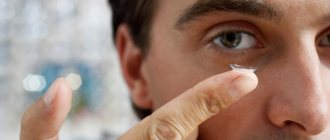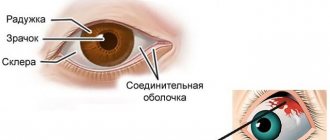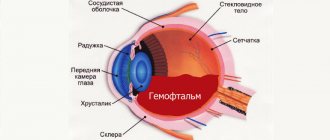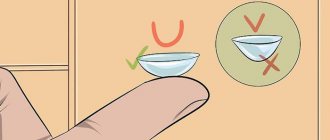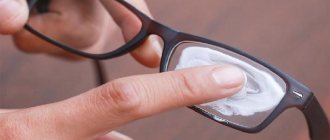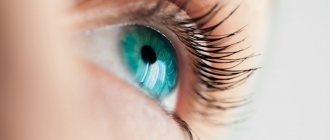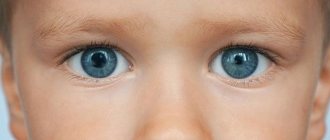Pain is one of the side effects that can occur when wearing soft contact lenses (SCLs). The appearance of pain can be provoked by various factors.
If this symptom occurs, you should find out why your eyes hurt after contact lenses. This will eliminate the root cause and get rid of the negative manifestation.
Why do your eyes hurt after contact lenses?
Pain is an extremely unpleasant symptom that is caused by irritation of certain receptors. Such irritation is caused by various factors and is often associated with concomitant ophthalmological disorders.
Depending on the cause, the pain syndrome can occur in different ways and be accompanied by additional symptomatic manifestations.
Oxygen starvation
In the eye, the cornea is most actively supplied with blood. Hypoxia is a pathological process in which blood supply is disrupted. Wearing lenses is the main factor causing this process.
Hypoxia usually develops when:
- Violation of the SCL wearing regime
- Untimely replacement of SCLs with new ones
- Rarely change the solution in the storage container
- Inappropriate lens size
These factors disrupt the supply of oxygen to corneal cells, which leads to hypoxia. The pathology is accompanied by a slight decrease in visual acuity, increased fatigue and pain. The violation poses a serious threat, since if hypoxia is not eliminated, the corneal cells die and peel off. The first sign is a painful reaction to bright light.
Dry eyes
The surface of the eye is normally constantly covered with a tear film. Contact lenses make it dry out faster. Due to the fact that there is practically no space left between the cornea and the contact lens, tear fluid does not get there. As a result, this area becomes dry.
Main features:
- Pain syndrome
- Redness
- Increased tear production
- Feeling of discomfort that increases when SCLs are worn
Typically, dry eye syndrome is not caused by the lens itself. Moisturizing is disrupted if the rules of application are not followed.
Inflammation of the cornea
This disease in ophthalmology is called keratitis. Pathology develops due to traumatic exposure or as a result of infection. Both reasons are relevant for contact lenses.
In the first case, the disease may occur due to excessive pressure on the eye when dressing. The second development mechanism operates in cases when pathogenic microorganisms enter the surface of the SCL, which subsequently come into contact with the cornea.
Main features:
- Redness
- Pulsation of eye vessels
- Corneal opacity
- Deterioration of vision
- Discomfort and pain in the affected area
Inflammation is usually accompanied only by local symptoms. But sometimes keratitis is caused by concurrent infectious diseases: influenza, tuberculosis, tonsillitis. In these cases, patients also have general symptoms.
Allergic reaction
Modern SCLs are made from hydrogel silicone. They are characterized by increased oxygen conductivity, so they cause the least harm to the cornea.
The disadvantage of this material is that it can cause allergies if the patient has an individual intolerance to such a polymer. In addition, an allergic reaction can be provoked by the components included in the solution.
Signs of an allergic reaction:
- Pain in both eyes
- Intense itching
- Increased tear production
- Redness
- Local swelling
The development of an allergic reaction indicates the need to exclude the allergen. This means that the patient must remove the lenses to interrupt contact with the cornea.
Mechanical damage
The polymer material from which MCLs are made is very sensitive to mechanical stress. If handled carelessly, cracks and scratches may appear. They negatively affect the cornea, causing irritation.
As a result, pain may develop, which occurs immediately after the lens is put on. One sign of damage is that pain always appears in one eye. If it is removed, the syndrome quickly passes.
Chemical damage
The condition of contact lenses is negatively affected by aggressive chemicals. If such substances come into contact with the surface of the SCL, pain may develop. Typically, household chemicals, cosmetics, and perfumes act as irritants. Smoke, especially tobacco smoke, also has pathogenic properties.
The contact of harmful substances on the lens can be accompanied not only by pain in the eye. Also, the victims experience increased tearing and redness. Possible partial deterioration of vision.
Causes not related to contact lenses
Eye pain when using SCLs is not always caused by the lenses themselves. A pathological manifestation may occur against the background of ophthalmological disorders.
Among them:
- Foreign body in the eye
- Increased intraocular pressure
- Glaucoma
- Neuritis
- Conjunctivitis
- Blepharitis
- Inflammation of the iris
In addition to ophthalmological diseases, pain can occur against the background of other pathologies. For example, eye pain often occurs with migraines, traumatic brain injuries, and inflammation of the paranasal sinuses.
First aid at home
First of all, you need to remove the contact lenses and place them in a peroxide solution. Thanks to this, they are moisturized and pathogenic microorganisms are removed from their surface. At the same time, the eyes take a break from the strain.
If the pain goes away immediately after removing the lens, the lens is most likely damaged. It should be taken to an ophthalmologist, who will examine it using a special optical instrument and identify the defect.
After removing the lenses, it is recommended to carefully examine the eye. There may be a foreign object on the surface that is causing pain.
How to eliminate pain
In most cases, pain goes away after removal of the SCL. If this does not happen, the symptom is not caused by the lens itself, but by a concomitant pathological process. In this case, an ophthalmological examination and comprehensive treatment are required.
What to do to relieve pain:
- Eliminate irritating factors
- Give your eyes a break from stress
- Increase indoor humidity to eliminate dryness
- Apply eye drops
- Do special gymnastics to improve blood supply to the eye
If discomfort occurs, do not rub your eyes with your hands, comb them, or rinse them under running water. To recover from stress and strain, a full night's sleep is recommended.
Application of drops
This medication is effective for eye pain. They have a complex effect, relieving the syndrome, moisturizing the dry surface. Before use, you should consult an ophthalmologist. Long-term use of drops is not recommended, as it can be addictive.
Popular drops:
- Okomistin
- Diclofenac
- Lidocaine
- Broxinac
- Sulfacyl-Sodium
- Tobradex
- Oftaquix
It is important to remember that many eye drops contain antibacterial ingredients. It is advisable to use them only for pathologies caused by bacterial infection.
What to do if there is redness
Hyperemia is a common accompanying symptom, often occurring simultaneously with pain. As a rule, redness is not associated with SCL, but is caused by improper care of them and violation of hygiene standards. Therefore, when such a symptom appears, first of all, you need to make sure that lens care meets the requirements.
If there is severe redness, the lenses should be removed. Moisturizing drops should be placed in the eyes. For these purposes, Oksial, Defislez, Alcon are used. These products are artificial tear substitutes, and therefore have a pronounced moisturizing effect.
How to prevent eye irritation
- Your eyes often get tired from lenses, so try to take breaks. Take them off when you get home.
- Do not neglect drops that relieve tension and saturate your eyes with nutrients.
- Remember to remove your lenses at night and do not use them for longer than prescribed.
- If the cause of painful sensations is dry eyes, then regularly use tear substitutes.
- You should select lenses personally and under no circumstances allow other people to wear your “contacts”.
- Change your lenses promptly and monitor the expiration date of the solution.
As you can see, there can be several reasons for the appearance of redness and irritation of the eye. But following simple rules will allow you to maintain the health of your eyes for many years and prevent the occurrence of unpleasant sensations.
Pain when using lenses for the first time
Typically, lenses are measured in the ophthalmologist's office, so the patient has the opportunity to evaluate their quality. The occurrence of pain during the first use may be due to incorrect selection of size, the presence of a defect, or the rapid development of an allergic reaction. In these cases, it is necessary to replace the SCL with others that will not cause unpleasant symptoms.
In addition, after the first use of SCLs, pain may be caused by increased strain on the eye. The lens is perceived as a foreign body and causes irritation. In this case, you need to provide your visual organs with proper rest.
Pain after night lenses
The appearance of pain during correction with night lenses is not uncommon. Most often, the disease is caused by severe dryness. Less commonly, the cause is allergic reactions, foreign bodies entering the surface of the eye shell, or improper care of the lens.
If such a symptom occurs, it is recommended to immediately contact a specialist in order to promptly find out the cause and eliminate it.
Causes of pain in the eyes
One of the most common causes of pain in the eyes is inflammation. First of all, these are inflammatory processes in the anterior parts of the eyeball, for example, conjunctivitis, keratitis.
The cause of the appearance of an unpleasant symptom may also be damage to the tissues of the eyelids, for example, blepharitis, uveitis. Most often, in addition to pain in the eyes, such patients suffer from lacrimation and photophobia.
Redness of the mucous membrane of the eyeball often appears. Such inflammatory processes are often caused by pathogenic cocci, E. coli, and chlamydia.
A favorable background for excessive proliferation of microorganisms is created by physical and mental fatigue and exhaustion of the body.
The infection penetrates into the membranes of the eyeball through microtraumas of the mucous membrane, as a rule, with insufficient compliance with the rules of personal hygiene, violation of the treatment regimen and wearing contact lenses.
Among the parasitic diseases that can be accompanied by severe pain in the eyes, demodicosis can be distinguished. The hair follicles of the eyelashes of such patients are affected by the Demodex mite, which causes itching and a sensation of a foreign body in the eye, which intensifies during stay in a warm room.
Eye damage can also have a viral etiology. Thus, the appearance of such clinical symptoms is caused by herpesvirus, adenovirus infections, and measles virus. Also, the cause of pain in the eyes can be damage to the conjunctiva by foreign bodies, diseases of the cornea with degenerative phenomena.
Often this symptom appears in patients with dry eye syndrome. This pathological condition is associated with a disruption in the natural hydration of the anterior parts of the eyeball and is most often found in people whose work involves prolonged use of a computer.
Severe pain in the eyes can also occur in case of visual fatigue, wearing excessively soft contact lenses, or if the patient has age-related hormonal diseases or somatic pathology. In some cases, the etiology of pain in the eyes goes beyond the competence of an ophthalmologist and requires consultation with a neurologist.
Most often, this pathological condition is caused by neuralgia of the trigeminal nerve, the branches of which are also involved in the innervation of some tissues of the eyeball. In this case, the patient often experiences severe pain along the distribution of other branches of the nerve, for example, in certain parts of the face or oral cavity.
For what diseases are Skulachev's drops most effective, dosage, indications, contraindications.
You can learn how chameleon photochromic glasses work from this publication.
When you need urgent help
If pain occurs while wearing lenses, it is recommended to consult an ophthalmologist, regardless of the cause. This will eliminate the risk of dangerous diseases that can damage your vision.
Urgent help is needed for the following symptoms:
- Intraocular hemorrhage
- Sudden decline in vision
- Noticeable cloudiness
- Intense pressing pain in the eye
- Spread of the syndrome to the forehead and other areas
- Development of edema
It is also necessary to visit a doctor if the pain is not accompanied by other symptoms, but does not go away for a long time.
What to do if your eyes are red
If your eyes hurt after wearing lenses, then you should remove them when the first signs of irritation appear (redness, discomfort, feeling of sand in the eyes). First of all, check to see if there is any debris in your eye. Under no circumstances should you rub your eyes.
Check the expiration date of the lenses and solution, replace them if necessary. Be sure to contact your doctor if pain does not go away within a few days.
